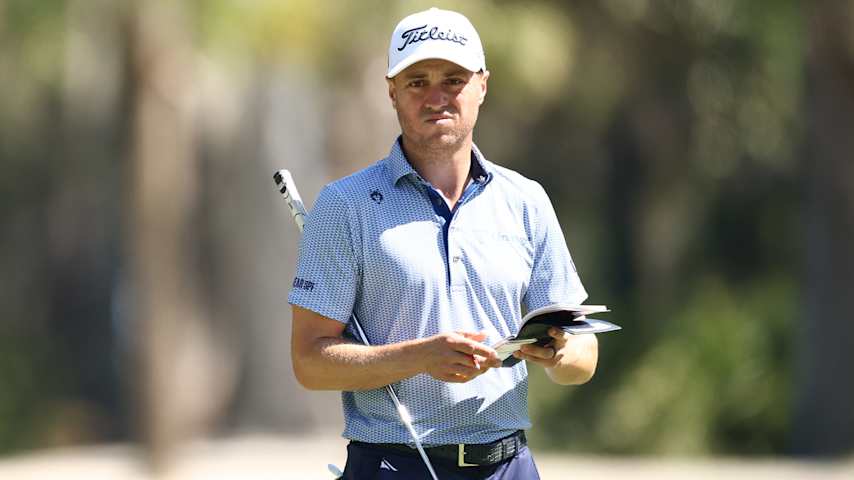PGA TOUR tests speed-of-play solutions, allows distance-measuring devices at RBC Heritage
3 Min Read

Scottie Scheffler and caddie Ted Scott use a distance-measuring device during practice. (Kevin C. Cox/Getty Images)
Written by Paul Hodowanic
HILTON HEAD ISLAND, S.C. – This week’s RBC Heritage will be a testing ground for the use of distance-measuring devices, the latest effort by the PGA TOUR to address speed-of-play issues.
Players and caddies will be allowed to use distance-measuring devices, such as rangefinders, for the next four weeks, running through the Truist Championship and ONEflight Myrtle Beach Classic.
The testing was pushed by the players involved in the TOUR’s Speed of Play Working Group – Sam Burns, Adam Schenk and Jhonattan Vegas – as a possible solution to speed up play. After the four-week testing period, the PGA TOUR and the working group will analyze the shot time data. Full-time implementation is possible if it yields positive results.
“They're going to have an extra tool in their toolbox for four weeks, and we're interested in hearing, following that period, how was it?” said Gary Young, the PGA TOUR’s senior vice president of rules and competitions. “Do you feel it was beneficial? Do you feel it helped you with pace of play?”
The Korn Ferry Tour previously tested distance-measuring devices in 2017, which Young said didn’t yield any “concrete” data that showed pace improved. However, Young said they believed field sizes were also a mitigating factor in the initial study. The next four weeks offer the opportunity to test the implementation of distance-measuring devices and several different field sizes.
In addition to the PGA TOUR, the Korn Ferry Tour will test distance-measuring devices at three consecutive events beginning with this week’s LECOM Suncoast Classic. PGA TOUR Americas and PGA TOUR Champions already allow the use of the devices.
Players must ensure the device measures distance only. All other features such as course mapping, club selection advice and measuring slope, elevation and wind must be disabled prior to using the device during competition. The penalty for the first breach of this rule is two strokes. A second breach results in disqualification.
The second recommendation from the Speed of Play Working Group is a revised Pace of Play Policy that includes assessing a one-stroke penalty for the first “bad time.” This will begin at at the Korn Ferry Tour level, beginning with this week’s LECOM Suncoast Classic.
A bad time occurs when a player exceeds the applicable time to play a stroke while being timed. Previously, a one-stroke penalty was not applied until a player received a second “bad time.”
PGA TOUR Americas adopted the revised Pace of Play Policy prior to the start of its 2025 season. Data will be collected across the two Tours to evaluate the overall impact on pace of play, which could lead to a new Pace of Play Policy being implemented on the PGA TOUR as early as 2026.
The TOUR previously announced a reduction in field sizes starting in 2026 to help the overall flow of play and better account for events with limited daylight. A third recommendation currently in development is the publishing of pace of play data for PGA TOUR members on TOUR media platforms.





